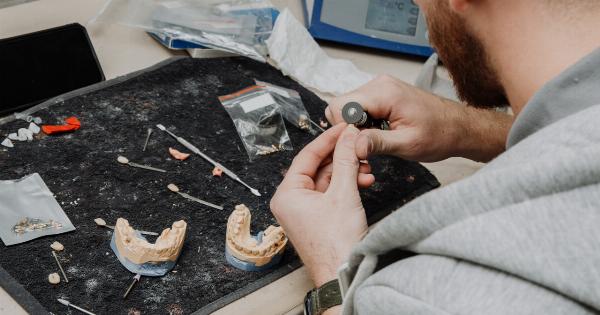Cardiovascular disease is one of the leading causes of death worldwide. The buildup of plaque in the arteries, a condition known as atherosclerosis, is one of the major causes of cardiovascular disease.
The traditional approach to managing atherosclerosis involves the use of stents and balloons to widen the narrowed arteries.
However, the development of intravascular atherectomy promises to revolutionize the management of cardiovascular disease and atherosclerosis. Intravascular atherectomy involves the removal of plaque from the arteries using minimally invasive techniques.
In this article, we explore the promise of intravascular atherectomy for the treatment of atherosclerosis.
What is Intravascular Atherectomy?
Intravascular atherectomy is a minimally invasive medical procedure that involves the removal of plaque from the walls of the arteries using a catheter.
The catheter is inserted through a small incision made in the thigh or arm and guided to the site of the narrowed artery.
Once the catheter is in place, a specialized tool, such as a rotablator or a laser, is used to remove the plaque from the walls of the artery. The removed plaque is then suctioned out of the body.
The procedure is performed under local anesthesia and can usually be completed in about 90 minutes.
Types of Intravascular Atherectomy
There are several types of intravascular atherectomy, including:.
Rotational Atherectomy
Rotational atherectomy involves the use of a small diamond-coated burr that is attached to a high-speed motor.
The burr is guided to the site of the plaque buildup, and the high-speed motor spins the burr, which grinds away the plaque from the walls of the artery.
Laser Atherectomy
Laser atherectomy involves the use of a small fiber-optic cable that is guided to the site of the plaque buildup. The fiber-optic cable delivers laser energy to the site, which vaporizes the plaque and clears the artery.
Directional Atherectomy
Directional atherectomy involves the use of a catheter with a rotating blade at its tip. The blade is guided to the site of the plaque buildup, and the rotating motion of the blade cuts away the plaque from the walls of the artery.
Orbital Atherectomy
Orbital atherectomy involves the use of a small diamond-coated rotating crown that is attached to a high-speed motor.
The rotating crown is guided to the site of the plaque buildup, and the high-speed motor spins the crown, which sands away the plaque from the walls of the artery.
Advantages of Intravascular Atherectomy
Intravascular atherectomy offers several advantages over traditional approaches to managing atherosclerosis, such as stents and balloons. Some of the advantages of intravascular atherectomy include:.
Minimally Invasive
Unlike traditional approaches, which involve invasive surgery, intravascular atherectomy is a minimally invasive medical procedure. The small incision made in the thigh or arm allows for quicker recovery and reduced risk of complications.
More Effective
Intravascular atherectomy is more effective than traditional approaches at removing plaque from the walls of the arteries.
Traditional approaches may only be effective at removing the blockage at the site of the plaque, whereas intravascular atherectomy can remove the entire plaque buildup.
Reduced Risk of Restenosis
Restenosis, or the re-narrowing of the artery following treatment, is a common problem with traditional approaches such as stents and balloons.
Intravascular atherectomy reduces the risk of restenosis by more effectively removing plaque from the walls of the artery.
When is Intravascular Atherectomy Used?
Intravascular atherectomy is used to treat atherosclerosis, which can cause a range of medical conditions, including:.
Coronary Artery Disease
Coronary artery disease occurs when the buildup of plaque in the walls of the arteries that supply blood to the heart causes reduced blood flow to the heart muscle. This can lead to chest pain, shortness of breath, and heart attack.
Peripheral Artery Disease
Peripheral artery disease occurs when the buildup of plaque in the walls of the arteries that supply blood to the legs and arms causes reduced blood flow to the muscles. This can lead to pain, weakness, and difficulty walking.
Carotid Artery Disease
Carotid artery disease occurs when the buildup of plaque in the walls of the arteries that supply blood to the brain causes reduced blood flow to the brain. This can lead to strokes.
Potential Risks and Side Effects of Intravascular Atherectomy
As with any medical procedure, there are risks and side effects associated with intravascular atherectomy. Some of the potential risks and side effects include:.
Bleeding or Hematoma
The insertion of the catheter through the incision in the thigh or arm can cause bleeding or the formation of a hematoma.
Infection
There is a risk of infection associated with any surgical procedure, including intravascular atherectomy.
Embolisms
The removal of plaque from the walls of the arteries can result in the release of plaque particles into the bloodstream. These particles can travel to other parts of the body and cause blockages.
Conclusion
Intravascular atherectomy is a promising medical procedure that offers several advantages over traditional approaches for the management of atherosclerosis.
With its minimally invasive approach and increased effectiveness, intravascular atherectomy holds great promise for the treatment of a range of medical conditions caused by plaque buildup in the arteries.




























